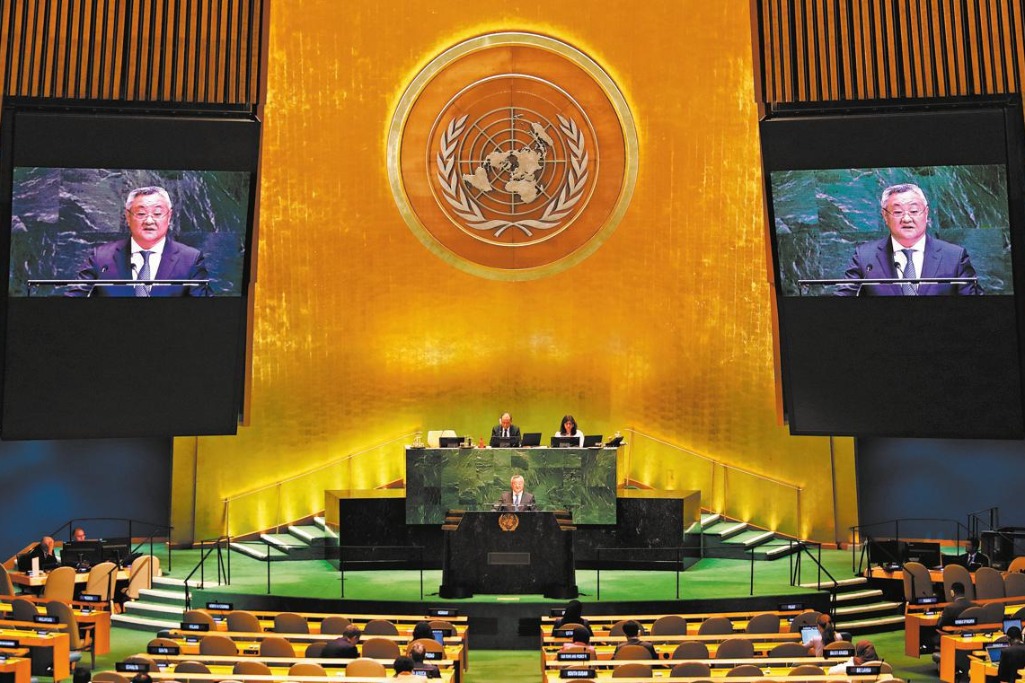Clean energy strides need long-term solutions

More efforts, global support vital for energy conservation, reduction of carbon emissions
There can be little surprise that the extraordinarily difficult negotiations in Durban on climate change needed extra time. What the delegates had before them was the problem of curbing ever-rising emissions of climate-changing pollution, and the main focus was on whether developed countries would extend their commitments to further reduce carbon emissions after their current commitments expire next year.
What is China's role and what are the implications of the conference?
China is now the largest energy consumer and carbon emitter, and is also the largest developing country. Its active participation in the Durban conference was obviously very important. What is even more important is the effort the Chinese government makes in conserving energy and reducing gas emissions. Under the 12th Five-Year Plan (2011-2015), the aim is to reduce energy use by 16 percent, compared with 2010, and carbon emissions by 17 percent compared with the same year.
Efforts to bring about such a transition are fraught with difficulty. Evidence clearly indicates that despite great efforts to make the economic changes that would encourage, and are appropriate to, reduced use of energy, in almost all government planning, central or local, the changes have been small indeed.
China is in the throes of industrialization and urbanization, which are keys to its becoming a middle-income country. In fact, the country's economic structure, with relatively low energy efficiency, high energy consumption and high emissions, are some of the problems of rapid economic growth, which is likely to continue until 2020. Huge demand for energy stands in stark contrast to the desire to keep costs down and to reduce emissions.
The reality is that China: has a large population with low per capita energy consumption; is in a development stage that requires large amounts of energy to support economic growth; and has a coal-dominated energy structure that will be difficult to change any time soon. It is difficult for developing countries to balance economic growth and energy efficiency. That means China will need to make a greater effort and will possibly need more help in the transition to a regime of energy conservation and low carbon emissions.
What are the implications of the Durban conference for China? The Green Climate Fund is obviously important in supporting efforts to reduce global carbon emissions. However, negotiations have been very difficult, especially on who will contribute to the fund and how much. Developing countries are counting on developed countries to make substantial contributions. The timing could not be much worse, as the debt crises wrack Europe. Because the Green Climate Fund represents the global effort to reduce carbon emissions, it ought to follow the basic principle of common but differentiated responsibilities.
Developed countries should have a better understanding of difficulties in clean development in developing countries. The development of low carbon emissions in China faces many tough challenges, even if there has been a substantial increase in government support for such efforts in the past few years. One is cost, clean energy being more expensive. Energy cost is a real issue in all developing countries, including China.
Rapid economic growth requires sufficient and affordable energy. Given China's emphasis on social stability, the cost of energy - and that means prices - is a highly sensitive issue, and that directly affects the development of clean energy. The need to keep energy costs down, illustrated by the difficulty in raising electricity prices, could reduce China's potential for clean development.
However, it can be expected that the Chinese government will continue its support in that direction. That requires not only a short-term commitment, but longer-term changes in the energy pricing system to make clean energy more competitive.
At present, the clean energy industry also faces many technical problems. For example, developments in storing electricity generated by wind and solar power and integrating it with the power grids remain at an early stage. Wind, solar and other clean energies will require huge investment to become meaningful alternatives to the country's coal-dominated power industry.
More help for developing countries in terms of technology and funds is clearly needed. For example, India is expected to have large carbon emissions for many reasons, but its per capita energy consumption is very low. Its population was about 1.2 billion last year and continues to grow. India will also maintain a coal dominated energy structure. So if the world could help China find a low-carbon growth solution, it might also be applicable to India in the future.
The author is director of the China Center for Energy Economics Research of Xiamen University. The views expressed in the article do not necessarily reflect those of China Daily.
Today's Top News
- Commerce minister urges US to increase areas of cooperation
- Strong demand for China's sovereign bonds signals global confidence
- Ministry urges Japan to 'maintain self-respect'
- Li: Forge closer ties with Zambia
- China seeks follow-up actions on Nexperia
- Xi: Emulate Hu Yaobang's spirit, style






























